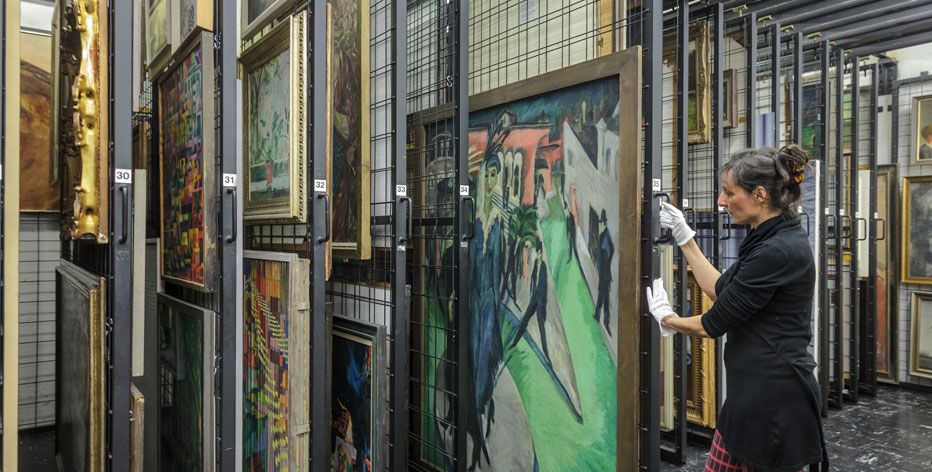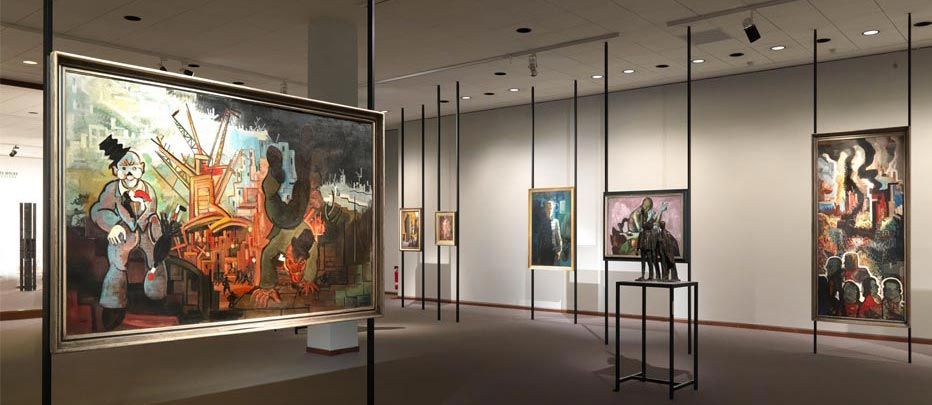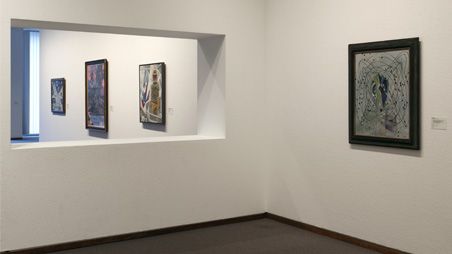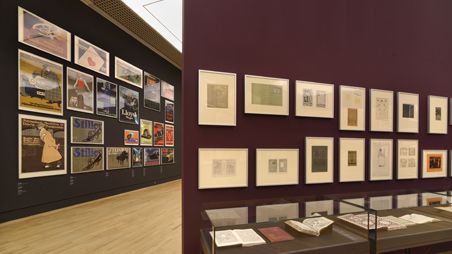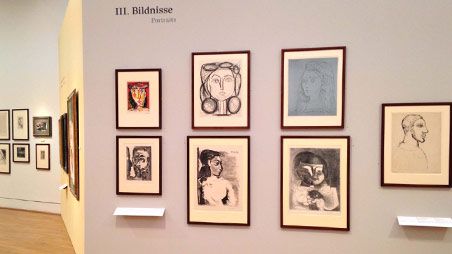The Nationalgalerie collection on the 20th century reflects a good 150 years of art and art history. For historical reasons, it focuses on Germany, Europe, and North America. The Nationalgalerie was founded in 1861 on Museumsinsel (Museum Island). Major modern works were exhibited in the Galerie der Lebenden in Kronprinzenpalais, the “Gallery of Living Artists” in the Crown Prince’s Palace, between 1919 and 1933. At that time, an appreciation for international movements such as Impressionism and Expressionism was cause for criticism. The Galerie der Lebenden gave the Nationalgalerie both a pioneering role and a key function in the art world.
Germany’s Division also Divided the Collection
The Nazi regime and World War II had a profound effect on the Nationalgalerie as well, since its collection suffered extensive losses. The collection was divided by the founding of two German nations in 1949. Parts of the collection were kept and maintained in the Alte Nationalgalerie on Museumsinsel in the eastern part of Berlin. Art from the GDR was added to the collection there. The Magistrate of Berlin was initially responsible for the parts of the collection that remained in West Berlin. At that time, the collection was still called the Galerie des 20. Jahrhunderts (Gallery of the Twentieth Century). In 1965, the Stiftung
Preussischer Kulturbesitz (Prussian Cultural Heritage Foundation) took over the collection for the Nationalgalerie. And in 1968, the Neue Nationalgalerie, which was designed by Mies van der Rohe, opened at the Kulturforum and became the collection’s home.
Hamburger Bahnhof as the Museum of Contemporary Art
The reunification of the two German states provided an opportunity to reunite the divided collections under the roof of the Stiftung Preussischer Kulturbesitz. For example, the inventories of classical modern art and post-war modern art in East and West Germany were united in the Neue Nationalgalerie. In 1996, the Hamburger Bahnhof – Museum für Gegenwart – Berlin opened as a new location for exhibiting contemporary art.
A tour of twentieth-century art
In recent decades, only parts of the collections of twentieth-century art could be displayed in the Neue Nationalgalerie and Hamburger Bahnhof since both buildings are much too small. But thanks to the planned connection between the Neue Nationalgalerie and the new museum, it will be possible to tour art from 1900 to the developments in the late 20th century within a single museum complex.
